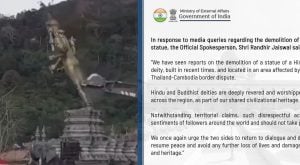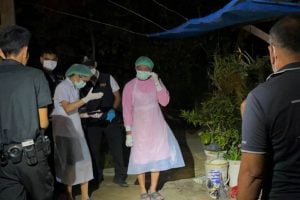UNESCO reports spike in killings of journalists in 2022

On Monday, UNESCO reported a dramatic spike in the killings of journalists around the world in 2022. A total of 86 journalists and media workers were killed across the globe last year.
This was after the number of journalists killed had been dropping in the previous years. In 2018, 99 journalists were killed, dropping to an average of 58 per year from 2019-2021.
But now, the number of killings of journalists is back up. UNESCO said the jump in the number of journalists killed was primarily due to a rise in deaths in non-conflict countries.
The number of journalists who lost their lives in non-conflict countries rose from 35 cases in 2021 to 61 in 2022. This represented three-quarters of all killings of journalists last year.
The deadliest region for journalists last year was Latin America and the Caribbean, with 44 deaths recorded. Asia and the Pacific registered 16 killings, while 11 died in Eastern Europe. The deadliest individual countries were Mexico (19), Ukraine (10) and Haiti (9).
One disturbing trend is the percentage of journalists who lost their lives while off-duty. About half of the journalists were killed when they were not on assignment. They were killed while travelling, in their homes, parking lots and other public places.
Off-duty journalists were killed for a variety of reasons, UNESCO said. These included reprisals for reporting on organized crime, armed conflict or the rise of extremism and covering sensitive subjects such as corruption, environmental crimes, abuse of power, and protests.
UNESCO said that impunity remains shockingly high for killers of journalists, with a rate of impunity of 86%.
Journalists are threatened with enforced disappearance, kidnapping and arbitrary detention, legal harassment, and digital violence, particularly against women journalists. Anti ‘‘fake news’ legislation is sometimes used to limit freedom of speech, which creates a toxic environment for journalists, UNESCO said.
A few cases this year have highlighted the disturbingly hostile environment to journalists across the globe.
In October, Kenyan police killed a Pakistani journalist. Police shot and killed a journalist, 50 year old Arshad Sharif, near Nairobi on October 23.
Police had stated that Sharif was shot after he failed to stop at a roadblock. They also said that it had been a case of mistaken identity.
Pakistani Interior Minister Rana Sanaullah has accused Kenyan police of “not cooperating” with the fact-finding team, saying “important data” about the case had not been handed over by Kenyan authorities. Sanaullah said the killing appeared targeted.
Will human rights fighters around the world be able to build a safer world for journalists one day?
Latest Thailand News
Follow The Thaiger on Google News:


























